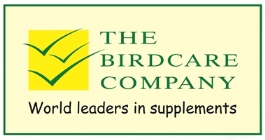31st Oct 2017
Plan for your birds breeding season well in advance

As experienced breeders know, it is far too much to expect our birds to come into breeding condition just because we put them in a cage with a mate.
Preparing for the breeding season involves either using nature's natural clues - which generally means breeding in the spring or, if we want to breed outside the natural cycle, creating the same messages in the birdroom or aviary.
First it is important to consider the origins of the species you want to breed. Are your birds European, tropical or natives of desert regions? This impacts significantly on the preparation your birds will need.
Nowhere in the world has a climate that is totally stable. Whether it is summers and winters, or wet seasons and dry seasons, everywhere has some sort of seasonal variation. This has an impact on the growth of plants. Most animals and birds respond to these seasons by breeding in the good times (summers and wet seasons). “Good” in this sense involves both quantity and quality of food. During dry seasons and winter most plants are relatively dormant. As food sources they are poor - low in protein, minerals and vitamins. When the season improves they start to grow and the level of nutrients in them rises. This makes them much better food. The most important change is the protein level.
There are two major signals that birds respond to that bring them into breeding condition.
More protein in the diet
Before breeding the adults need to know that the food is going to be good enough to raise babies. For European species such as canaries, chaffinches and European softbills, it is best to give that message gently for 2-3 months prior to your planned breeding date. On the other hand, species native to dryland regions such as budgerigars, zebra finches and other tropical finches respond to improving conditions dramatically faster, needing more like 6 weeks.
Rapidly growing young birds require a lot of protein for good growth. 20% is a fair rule of thumb. So, as the protein level of the diet increases, this sends a message to the adult birds that raising chicks is likely to be a good prospect. Traditional captive bird diets have protein levels between 8% and 12%. At The Birdcare Company we firmly believe these are too low for either good adult breeding stimulation or maximum chick growth. There are two ways to improve dietary protein. The first is to add limiting amino acids to the diet. This guarantees (if you add enough) that the bird can utilise all of the protein in the seed, fruit or pulses that you are feeding it. Without these extras your bird can only utilise about 60% of the protein it gets from plants. The second way to increase dietary protein is to add a high quality protein source into the eggfood which you provide to your birds. Increase that amount gradually as the target breeding time approaches.
Most eggfoods are 16% protein but we have seen that for a short while babies will do best with as much as 25%. But the adults don't expect 25% foods to suddenly become available.
As a minimum, start offering small amounts of eggfood well in advance of the breeding season.They probably won't eat much - they don't need it - but they do need to know it is there.
Upping the calcium levels in the diet as soon as the first hens start laying is also important. Continue that right through the breeding season and early chick weaning period.
Always offer the eggfood separately from the seeds. The adults will pick the blend of these two that provide the chicks with the right level of protein for their stage of growth. And feed as much or as little of the eggfood as they will eat. They will never overfeed on this high protein food.
As they grow the chicks need more and more energy to maintain their bigger bodies. So while they still need lots of protein to grow they need even more energy to keep their bodies warm and move around a lot more. When they fledge and start to fly this requirement for more energy gets even more important. So the older they are the lower percentage protein they require.
If we tried to work all this out for every bird every day in the birdroom we would need a supercomputer. Fortunately we don't need to. The parents are a supercomputer themselves.
For even better results it is advisable to add a probiotic into the eggfood in the last week or two before breeding. This kicks the adults into tip top condition and has the chicks' digestive systems working at full tilt with an excellent impact on health and growth.
Longer days
Where birds are kept indoors, it is essential for breeders to provide slowly increasing light hours. Regardless of diet this will bring adults into breeding condition. For them it is a predictor that the feed will improve in the future. But you will get best results if you change the diet and the light together. The worst thing to do is rely entirely on lights and leave the birds with a low protein diet. These are the birds that are most likely to abandon their nests and start again hoping that the prediction of future plenty comes about the next time.
As a guideline, breeding preparation for dryland birds such as budgerigars, cockatiels and foreign finches as well as for tropical birds such as Amazons and conures, needs to be roughly 6 weeks. However for our northern species such as canaries, chaffinches and European softbills, preparation needs to be more like 3 months before breeding.
